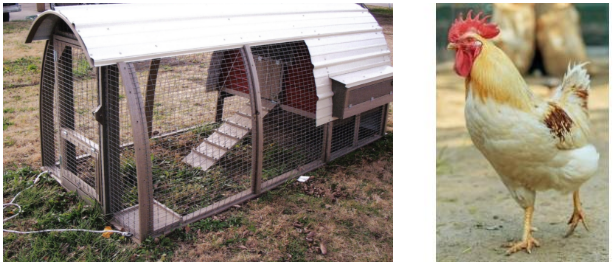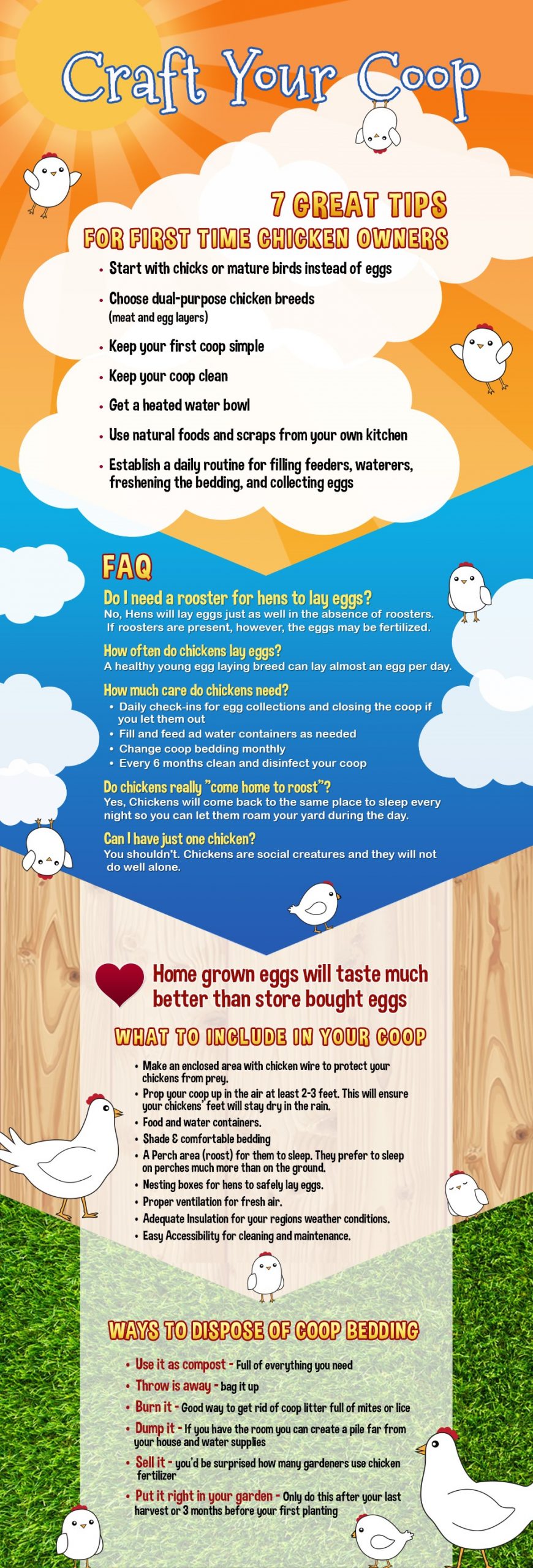Cackle Hatchery offers customers a diverse range of chickens to choose from, so you can find the right backyard chickens for your needs. If you are looking specifically for pet chickens and you are new to raising chickens, here is a handy guide to help you find the perfect fit and tips on how to raise a chicken as a family pet.
Backyard chickens can be surprisingly affectionate and many people who are new to raising chickens are shocked at how loving they are. When you find the right chicken breed for your backyard farm, you’ll know it because you will love your chickens and they will love you!
Browse Our Baby Chicks Now!

How Many Chickens Should I Get?
Chickens are social birds and they do best in a flock, but a flock doesn’t need to be large. Even a flock of two chickens is enough to satisfy the birds’ social needs. When considering how many to get, you also need to take into account a few other factors. For instance, it’s important to have enough space, feed and shelter, not to mention time to spend with your pet chickens. If you are raising your backyard chickens for eggs, generally two or three hens per family member will give you plenty of eggs to feed your needs. If you plan to sell eggs, plan on raising a few more chickens.
COLD WEATHER CHICKENS
There are many chickens that were originally raised and bred in cold climates, therefore they are adapted to weather cold temperatures. If you live in an area where freezing temperatures are common for part or most of the year, you will want to lean towards some breeds and completely avoid others when raising chickens in your backyard. Standards are hardier than bantams (miniature chickens) and heavier breeds will endure the cold better. Look for backyard chickens with small combs and wattles, as larger combs and wattles are susceptible to frostbite.
Especially cold-hardy breeds include Plymouth Rocks, Wyandottes, Chanteclers, Orpingtons, Langshans, Sussexes, Easter Eggers, Marans, Cochins and Brahmas.
HOT SUMMER CHICKENS
While some backyard chickens are adapted to cold weather, others are adapted to the other extreme – hot climates. If you live in an area that experiences extreme heat (regularly hotter than 100 degrees F), be careful to avoid heavy, fluffy, feather-footed breeds when raising chickens. You may also want to consider the smaller bantam breeds, as these chickens are often better suited to hot-weather climates (except Cochins and Brahmas).
Heat-tolerant chicken breeds include Leghorns, Fayoumis, Hamburgs, Polish, Sumatras, Dominiques, Columbian Rock, Welsummer and most Bantams.
EGG COLORS
There are no significant nutritional differences between eggs that have different shell colors. The nutritional value of an egg is determined mainly by what the chicken eats, which makes most farm-raised or backyard chickens produce healthier eggs than eggs produced on factory farms, regardless of their color. Cackle Hatchery supplies egg-laying chickens that will lay standard white eggs, varying shades of brown, and even “Easter Egger” chickens that produce eggs in varying shades of blue or green.
Here’s a quick look at the types of chickens that lay each of the different egg colors:
Blue eggs: Ameraucanas, Legbars, Super Blue Egg Layers, Cuckoo Bluebars
Green/blue eggs: Easter Eggers, Favaucanas, Ameriflowers
Medium dark, reddish-brown eggs: Welsummers, Brahma, Dominique, New Hampshire Red, Orpington, Rhode Island Red
Very dark, chocolate brown eggs: Marans, Penedesencas
Pinkish brown eggs: Plymouth Rocks, Salmon Faverolles
Cream-colored eggs: Polish, Sussexes, Sumatras, Cochin, Old English, Silkie, Wyandotte
Olive eggs: Any of our Olive Eggers
White eggs: Leghorns, Polish, Whites, Hamburg, Lakenvelder, Sultan
BEST BREEDS FOR KIDS
If your pet chickens will be around kids, it is best to get a breed that is gentle, not territorial. You’ll want chickens that are soft and affectionate and capable of tolerating the high energy and rambunctiousness of kids. Some of the best kid-friendly chicken breeds include Cochins, Orpingtons, Brahmas, Silkie Bantams, Easter Eggers and Golden Buffs.
CHICKS OR CHICKENS?
When ordering pet chickens or backyard chickens, it is important to consider whether you want to raise your chickens from chicks, order pullets or order laying hens. Raising baby chicks is a rewarding experience that allows you to bond with your pet chicken as it grows up. Raising chickens from chicks is also a demanding experience, as these little ones require care, attention and the right environment to grow up strong and healthy. Many hatcheries also only allow you to order baby chicks in quantities of 25 or more, which is too many for most backyard farms. However, we can ship as few as three day-old chicks, so you can order the exact breed and quantity that you want!
OTHER CONSIDERATIONS
Before choosing a pet chicken, it is important to consider the time, care, upkeep and environment that chickens need. You chickens require at least 10 minutes a day of your attention, as well as a few hours for semi-annual chores. Baby chicks are delicate and they need much more care to ensure they grow up strong. It is also important to consider your space constraints, too. If you are keeping your chickens exclusively in a coop, they’ll need at least 10 square feet per bird. If you have space outside to allow them to range freely, they will only require 2 square feet per bird in the coop, as well as 10 square feet per bird outside. Chickens are free-range animals, so it’s always best to give your chickens outside space, if possible.
DOES YOUR TOWN ALLOW CHICKENS?
Before ordering chickens, make sure that your town health and zoning boards allow you to raise chickens. Some municipalities limit the size of flocks or prohibit chicken coops within town, village or city limits, so check on the rules regarding fowl so you don’t run afoul of the law.
CARING FOR BABY CHICKS
If you decide to raise baby chicks, make sure that you have time to care for them. For the first four weeks of their lives, chicks require a lot of care. They also require a climate-controlled safe area, free of predators. They can be housed in a big, wide or long cardboard box. Do not use plastic storage bins, kiddie pools or anything that won’t be big enough so you don’t overheat the chicks and keep ventilated, climate controlled and safe. Ventilation holes must also be drilled on all sides of the enclosure to provide consistent air flow.
For the first week of their lives, mail order chicks require floor temperature under the heat source to be 100-105 degrees and plenty of room for a cool area or zone for the chicks to get away from the heat. For the second week, the temperature can be dropped to 90 degrees, and continually reduced by 5 degrees each week until the chicks are ready to go outside. A quality infrared heat bulb under 250 watts will generally keep your enclosure warm, but it’s important to be careful with placement as use as these bulbs can overheat or cause fires if they come into contact with dry, flammable materials. The chicks will need absorbent bedding, ideally wood shavings about 1 inch thick. Be aware that newspaper can cause permanent deformities to the chicks’ feet.
To start your chicks it is very important to use a quart or gallon chick waterer for at least the first 2 weeks. The first day be sure to use warm water. After 2 weeks you can consider using a dripping water dispenser in lieu of a water bowl, as these are dangerous and unsanitary. Similarly, use a chick feeder and not a bowl for food. Feeding your young birds food that is formulated especially for baby chicks will keep them healthy. If your chicks are vaccinated against Coccidiosis, use an unmedicated feed. If they are only vaccinated against Marek’s disease, medicated feed will help keep them healthy.
PET CHICKEN COOP REQUIREMENTS
Chickens require an area that is sheltered from predators and weather. When constructing your coop, keep the following in mind, while also considering the space you will need for your chickens (see above).
• Ensure predators cannot enter the coop or burrow up from the bottom
• The coop should be ventilated to guard against respiratory disease
• Shelter the coop to keep cold drafts out
• Make sure the coop is easy to clean to stop bugs and bacteria
• Provide roosting poles for your chickens to sleep on.
• Encourage egg-laying with one nest box for every four or five chickens
• Nest boxes should be raised off the ground, but lower than the lowest roosting pole
• Keeping nest boxes dark and sheltered helps to ensure the hen feels safe
• Allow at least 2 square feet per bird if birds are able to roam freely during the day, and at least 10 square feet per bird if they are permanently confined
• Provide a feeder and waterer located off the ground
• Include removable dropping trays under roosting poles to easily clean the area.
REGULAR UPKEEP
Regular, scheduled upkeep will extremely reduce the incidence of disease and other problems. Take care of these lists on a daily, monthly and bi-annual basis to maintain the health of your chickens.
On a Daily Basis
• Keep feeders and waterers full and clean
• Check your chickens’ health
• Collect and refrigerate eggs, pointy side down for maximum freshness.
On a Monthly Basis
• Change the bedding in the coop and the nest.
On a Semi-Annual Basis
• Scrub the whole coop clean
Learn more about raising chickens, get the supplies you’ll need or place an order chicks for your home today by calling Cackle Hatchery at 417-532-4581.

